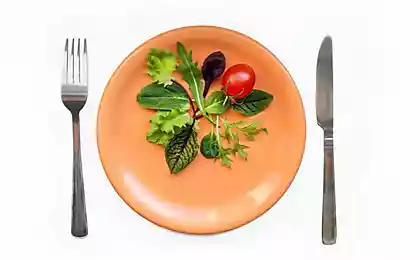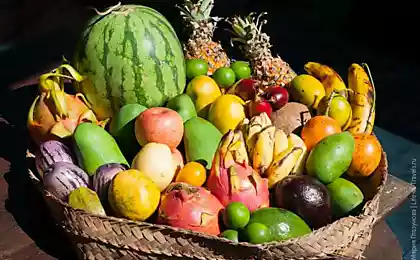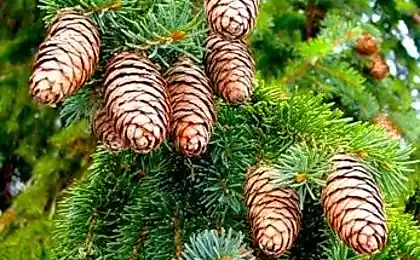805
Sweet marjoram — a wonderful condiment not only

Sweet marjoram, also called garden, is one of the most popular herbs in Mediterranean cuisine. It is grown for its medicinal and culinary properties known to mankind since ancient times. Its delicate sweet aroma and delicate spicy flavour is milder than oregano (origanum vulgare, wild marjoram, Origanum vulgare). Botany, sugary marjoram to the family Labiatae and the genus Origanum. Its scientific name is Origanum majorana. To the family Labatiacea include anise, fennel, cumin and other popular condiments. Garden marjoram is a native of Asia Minor (Turkey). He now grows throughout the Mediterranean and Southern Europe. Its constituent compounds have antibacterial properties.
The plant itself represents a small shrub, which are characterized by a tree-like stems. It prefers dry calcareous soils. Reaches 75 centimeters in height and is characterized by hairy stems with oval, dark green leaves. The flowers of marjoram — pinkish-white.
Usually the leaves are harvested immediately after formation of flower buds, but before flowering. The collected stems of oregano hung in a dark dry room for 7-10 days. Then separate the leaves from the stems and store in a protected from the air flow containers.
Several other types of marjoram is also cultivated for culinary and medicinal purposes. Oregano (wild marjoram) marjoram and winter have a strong scent. The flowers of wild marjoram white or pink.
The benefits of oregano for healthSweet marjoram is one of the most popular herbs, particularly in the Mediterranean. The ancient Greeks made wreaths and garlands, considering the plant a symbol of peace, harmony and happiness.
Marjoram contains many important phytonutrients, minerals and vitamins required to maintain health in good condition.
Parts of the plant contain chemical compounds such as eugenol Sabine, alpha-terpinene, cymene, terpinolene, linalool, CIS-sabinen hydrate, linalyl acetate, terpinene-4-ol and terpineol. These compounds have anti-inflammatory and antibacterial properties.
Fresh marjoram is characterized by a high content of vitamin C (ascorbic acid) — 86% of the recommended daily consumption of 100 grams. Vitamin C — a powerful natural antioxidant that helps rid your body of damaging free radicals. Ascorbic acid also has immune system enhancing, wound healing and antiviral properties.
Oregano is incredibly rich in beta-carotene, vitamin a, cryptoxanthin, lutein and zeaxanthin. In 100 grams of dry marjoram contains 8068 international units (IU, IU) of vitamin A, which is 269% of the recommended daily allowance. Carotenes, xanthine and lutein are powerful flavonoid antioxidants. Together, these compounds are scavengers of free radicals of oxygen and its reactive forms, which contribute to aging and various disease processes.
Vitamin a is known for its antioxidant properties and is important for maintaining sight healthy. It also supports healthy mucous membranes and skin. Eating natural foods rich in vitamin a and carotenes, is considered a certain protection against lung cancer and oral cavity.
Zeaxanthin, an important dietary carotenoid, selectively absorbed by the yellow spot of the retina. It is considered to be possessing antioxidant and protective properties setopentime. It was found that it counteracts age-related macular degeneration, especially in older age.
Sweet marjoram is one of the richest herbal sources of vitamin K. 100 grams of dried leaves of marjoram contains 518% of recommended daily consumption of this vitamin. Vitamin K is likely to play a role in the formation of bone, and osteotropic activity in the bones. The role of this vitamin in the treatment of Alzheimer's disease as it limits damage to neurons in the brain damage.
Marjoram contains appreciable amounts of minerals such as iron, calcium, potassium, manganese, copper, zinc and magnesium. Potassium is an important component fluids of the cells and organism, helps control heart rate and blood pressure. Manganese is used by the body as a connecting factor in relation to antioxidant enzyme superoxiddismutase.
Its leaves are a good source of iron. They contain 82,71 milligrams of iron per 100 grams, which is about 1034% of the recommended daily allowance. Iron acts as an important connecting factor in relation to the cytochrome oxidase enzyme in the cellular metabolism. Furthermore, as a component of hemoglobin in red blood cells, it determines the oxygen capacity of the blood.
Selecting and storing marjoramand fresh And dried leaves of marjoram used in cooking. Fresh have a deep greyish-green. They should not be yellowish blotches. The leaves retain their best properties, if collected immediately before flowering. The seeds are also used marjoram.
Store fresh leaves in the refrigerator. Dried marjoram should be stored in tightly closed glass containers in a cool, dark and dry place. There they will retain their properties for up to six months.
Fresh marjoram herb rinse under running cold water or immerse in water for a few minutes to remove dirt and pesticide residues. Dry marjoram leaves retain aroma, their flavor is even more intense. This marjoram is different from other dried herbs, including sage and thyme.
The use of oregano in medicine,Part marjoram contain many health enhancing compounds in essential oils. It contains terpenes, linalool, terpineol, carvacrol, linolelaidic, aciman, gardinen, geraniaceae, citral, eugenol and others. These compounds are known for their anti-inflammatory and antibacterial properties. Miranova oil is used for minor manifestations of flatulence, muscular pain and rheumatism.
Eugenol in sweet marjoram has anti-inflammatory properties and prevents the enzyme cyclooxygenase, a concomitant inflammatory process in the body. Since eugenol inhibits this enzyme, it becomes effective protivovpotnam tool for those people who suffer from such inflammatory diseases as rheumatoid arthritis, osteoarthritis and inflammatory bowel disease.
With moderate use it reduces menstrual pain and lacorey. Since it increases menstrual flow, can not be eaten marjoram during pregnancy and excessive bleeding during menstruation.
Contained in the marjoram essential oil also have antifungal and antibacterial properties, and restrain many pathogenic bacteria, including Staphylococcus aureus, Escherichia coli, Shigella, Proteus and Pseudomonas.
The nutritional value of sweet marjoramIn parentheses are the percentage of the daily allowance. Nutritional value is based on 100 grams of dried leaves of sweet marjoram (Origanum majorana) according to information from the Ministry of agriculture of the USA, shown in the resource Nutrition And You.
General information:
the energy value is 271 calories (13,5%);
carbohydrates — of 60.56 grams (46.5 per cent);
protein — 12.66 grams (22%);
fats — 7.04 grams (23%);
fiber, part of the food — 40.3 grams (106%).
Vitamins:
folic acid (vitamin B9) — 274 micrograms (68,5%);
nicotinic acid (vitamin B3) — milligrams of 0.902 (25,75%);
Pantothenic acid — 0,209 milligram (4%);
pyridoxine (vitamin B6) — 1,190 milligrams (91.5 per cent);
Riboflavin (vitamin B2) — 0,316 mg (24%);
thiamine (vitamin B1) — 0,289 milligrams (24%);
vitamin A — 8068 international units (IU, IU) is 269%;
vitamin C 51.4 mg (86%);
vitamin E — 1.69 mg (11%);
vitamin K — 621,7 micrograms (518%);
Electrolytes:
sodium — 77 mg (5%);
potassium — 1522 milligrams (32%).
Minerals:
calcium — 1990 milligrams (200%);
copper — 1,133 milligrams (126%);
iron — 82,71 milligrams (1034%);
magnesium — 346 milligrams (86,5%);
manganese — 5,433 milligrams (236%);
zinc 3.60 mg (33%).
Phytonutrients:
beta-carotene (ß-carotene), which is rich in carrots — 4806 micrograms;
beta-cryptoxanthin (β-cryptoxanthin) is 70 micrograms;
lutein-zeaxanthin — 1895 micrograms.published
Source: hi-news.ru
The Mosaic of Wishing or What We Really Want
Mixed planting in Your garden for pest control without chemicals























